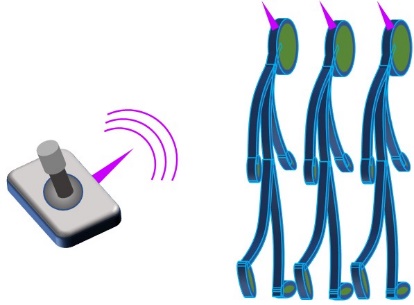EQ + AI = employee 2.0?
Years ago, I collaborated on a project with a Chinese woman who had been residing in Canada for eight years. As the project progressed, our conversations deepened.
 As the project progressed, our conversations deepened. She shared that she wasn't
a fan of the Canadian school system for her two primary
school-aged children. Therefore, she enrolled them in a Chinese
school every day after regular classes, until just an hour before
bedtime. Initially, I assumed it was to teach them Mandarin, but
her motive was different.
As the project progressed, our conversations deepened. She shared that she wasn't
a fan of the Canadian school system for her two primary
school-aged children. Therefore, she enrolled them in a Chinese
school every day after regular classes, until just an hour before
bedtime. Initially, I assumed it was to teach them Mandarin, but
her motive was different.
 She believed that her children's unique personalities were a hindrance. To remedy this, floating eyesshe sent them to Chinese school to downplay their individual traits, thinking it would better prepare them for societal contributions. It struck me as a unique perspective, and she proudly asserted that the Chinese understood this approach, suggesting that the West had some catching up to do.
She believed that her children's unique personalities were a hindrance. To remedy this, floating eyesshe sent them to Chinese school to downplay their individual traits, thinking it would better prepare them for societal contributions. It struck me as a unique perspective, and she proudly asserted that the Chinese understood this approach, suggesting that the West had some catching up to do.
This conversation has lingered in my memory, prompting me to wonder if her perspective was visionary.
 The answer might lie in a post from The Technology Review, dated April 30, 2018, and originally published in the South China Morning Post. The post discusses the implementation of headgear with brain activity monitoring devices for Chinese factory workers, soldiers, and train staff. These devices aim to detect sudden changes in emotional status, particularly focusing on signs of depression, discomfort, or anger. The system then deploys artificial intelligence to address these emotional states.
The answer might lie in a post from The Technology Review, dated April 30, 2018, and originally published in the South China Morning Post. The post discusses the implementation of headgear with brain activity monitoring devices for Chinese factory workers, soldiers, and train staff. These devices aim to detect sudden changes in emotional status, particularly focusing on signs of depression, discomfort, or anger. The system then deploys artificial intelligence to address these emotional states.
Setting aside the scepticism of experts regarding the effectiveness of such a system, it raises a personal question: Would I consider using this technology to manage or assist my employees? Personally, I have not come that far yet and would fear for improper usage. It wasn’t long ago, and for some that time hasn’t even arrived, that we began recognizing and acknowledging emotions and their underlying factors. The evolving understanding is that diversity and emotions can enhance a team’s dynamics, fostering better performance.
What about you? Are you effectively leveraging diversity within your teams? How are you strengthening emotional intelligence as a prerequisite for positive interaction?